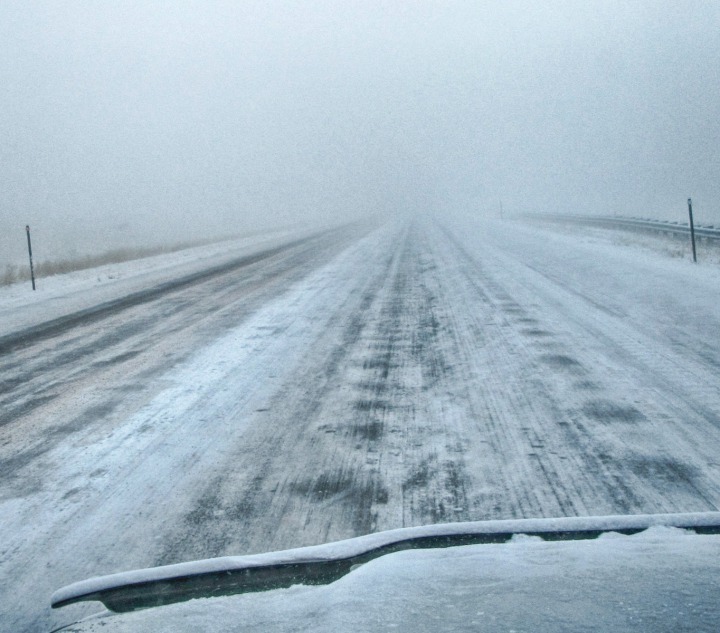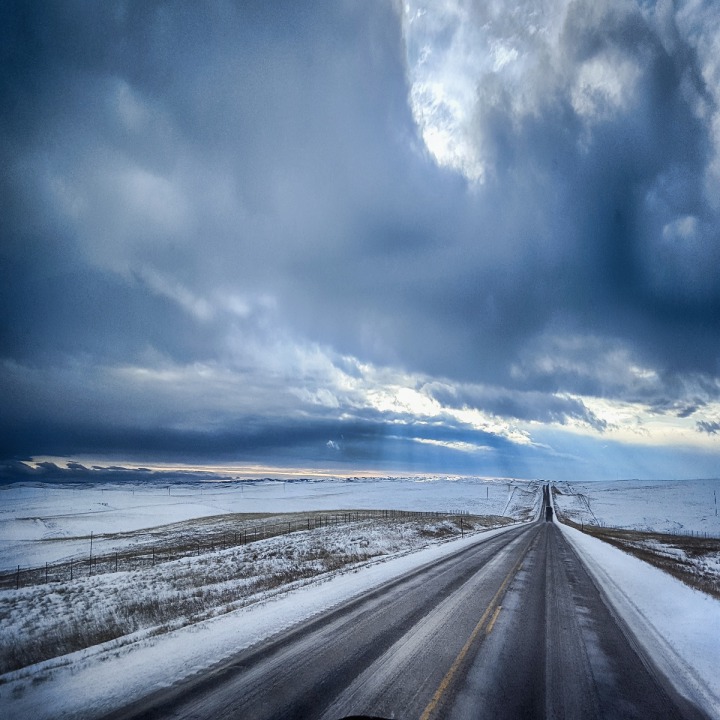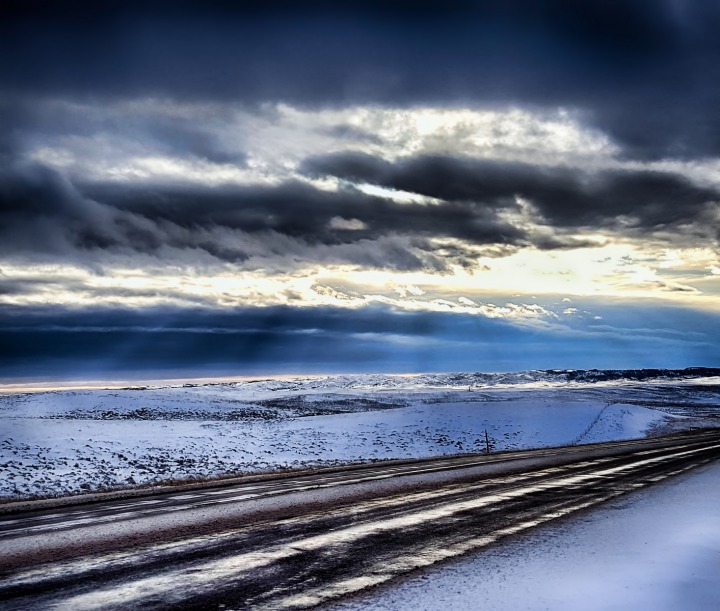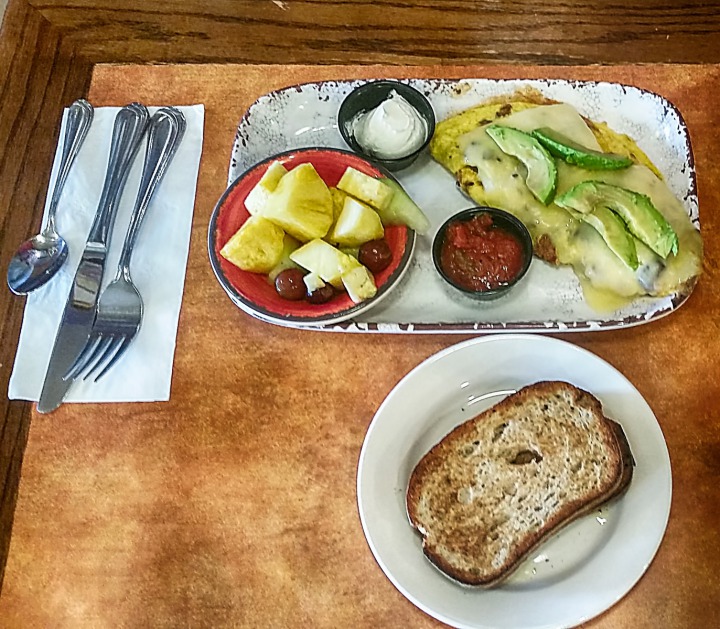Day One -- Rapid City SD to Casper WY, 31 January 2018: The blizzard was over when we headed west on I-90 from Rapid City. Or so we thought! Just past Sundance WY, ground blizzards swirled up and reduced visibility significantly. The plows were scraping the shoulder of the highway as best they could to eliminate the source of the blowing snow.
The Ground Blizzard -- "What's a ground blizzard?" you may ask. The snow accumulates along the edge of the road and in the bordering fields. Then the wind makes its contribution, sending the top layers of snow sliding across the road. The trickiest thing isn't the reduced visibility, though. It's the layers of snow dropped on the bare road that turn immediately to ice. Many a driver new to the vast emptiness of the West finds that out the hard way as the car careens into the ditch, thrown there by that unexpected ice.Looking straight up, one sees beautiful blue sky, scrubbed clean by the real blizzard the day before. Looking ahead, one sees not much!
South out of Gillette -- In Gillette, we headed south on WY HWY 50, a road heavily used by coal and oil field equipment and obviously heavily plagued by ground blizzards.Every ten miles or so, highway signs warned up that the road might be closed ten or eight or five miles ahead, depending on changing conditions.What a harsh place to live and work! The snow coated the hills, and everything in front and behind was just rolling white and stubble hills.
Black and Yellow Trail -- A few miles south of Gillette, a road sign -- Black and Yellow Trail -- piqued our curiosity. My trusty phone informed me that The Black and Yellow Trail was the promotional name for the portion of US HWY 14 nominally linking the Black Hills of South Dakota to Yellowstone National Park. The signed auto trail route was extended by promoters to Chicago in the east. In 1919, it was proposed as a brand for a continuous route from Boston to Seattle. The headquarters for the promotional association were established in Huron SD with the aim of diverting traffic from the better-known Yellowstone Trail to the north. The route began in Chicago, and made its way west, crossing Illinois, Wisconsin, Minnesota and South Dakota, ending in Wyoming. It runs along modern-day US HWY 16, and the moniker is based on the access the road provided to both the Black Hills of South Dakota and Wyoming's Yellowstone Park. The route was diverted to the south in Campbell County (Gillette) to cross the Powder River at a low point, and there is still a road in the county known as the Black and Yellow Road.
On to Casper -- Just as we were nearing the junction with WY HWY 387, the sun cut a slash through the cloud cover and lit the distant prairie and the mountain range to the west.Then we turned west on WY HWY 387 to WY HWY 259 south to I-25 south and Casper. There was a lot of heavy equipment traffic out here -- who even knew what these machines were for?
Arepa, Arepa! -- After we checked in and unloaded all the gear, we looked for a restaurant. And my wonderful phone found The Arepa Barn Restaurant, a Venezuelan eatery not far from the motel. Off we went through a tattered industrial area with a few small rundown houses, and there was the restaurant.
"What is an arepa?" you may well ask. The arepa is a round, flat unleavened patty of soaked ground kernels of maize, or -- more frequently nowadays -- maize meal or maize flour. This production of maize is unusual for not using the alkali cooking process to remove the pericarp of the kernels. This makes arepa flour different from masa flour, which is used to make tortillas. The arepa is one of the most common pre-Hispanic foods still popular in Venezuela where arepas are commonly filled with a great variety of different fillings, from beef and avocado to yellow cheese.What we know is that they were absolutely delicious and a very unexpected treat in Casper WY!
Text by Louise. Photos by Brian. Text and Photos copyright Goinmobyle, LLC, 2018.







